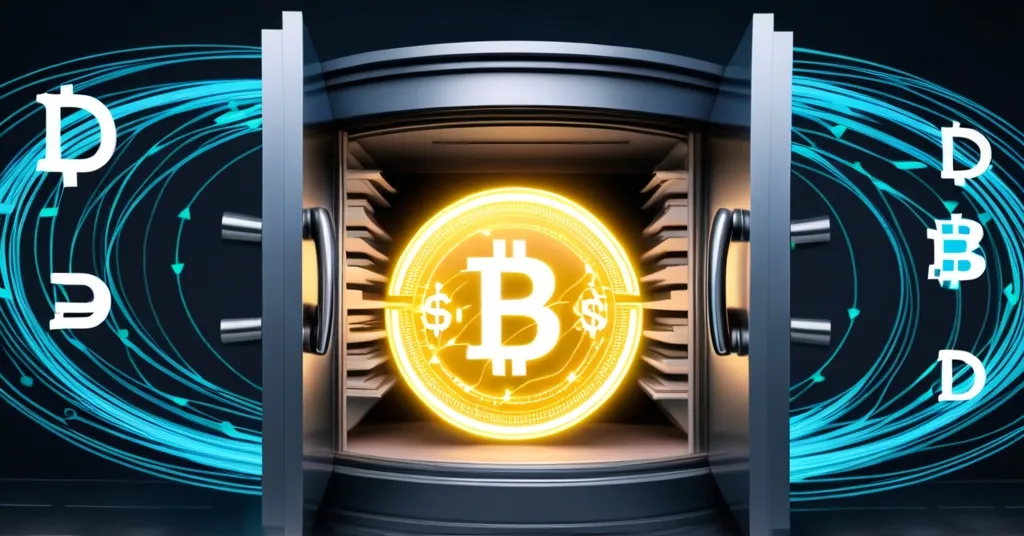FV Bank Adds PayPal’s PYUSD, Revolutionizing Digital Banking with Stablecoins

FV Bank Integrates PayPal’s PYUSD, Pioneering Digital Asset Offerings
FV Bank has boldly stepped into the future of finance by integrating PayPal’s USD stablecoin, PYUSD, into its digital banking platform. This move not only allows customers to seamlessly receive and send PYUSD directly from their USD accounts but also marks a significant leap in the fusion of traditional banking with the dynamic world of cryptocurrencies.
- FV Bank now supports PayPal’s PYUSD for direct deposit and payments.
- Customers can receive PYUSD with real-time conversion to USD.
- FV Bank’s system converts USD to PYUSD on demand, delivering it near-instantly.
- Partnered with Visa in October 2024 to launch debit and corporate expense cards.
- Offers three major stablecoins: USDC, USDT, and PYUSD.
- Supports 13 global currencies, enhancing treasury management.
With the integration of PYUSD, FV Bank isn’t just pushing the envelope; it’s tearing it wide open. Imagine being able to convert your USD into PYUSD on the fly, thanks to FV Bank’s real-time processing wizardry. This isn’t just a feature; it’s a game-changer for those juggling cross-border payments, turning what used to be a slow dance into a swift sprint.
Hot on the heels of this integration, FV Bank’s October 2024 partnership with Visa at the Money 20/20 conference in Vegas was no less than a jackpot. This collaboration birthed debit and corporate expense cards that treat both fiat and digital assets like old friends. Now, spending your cryptocurrencies globally is as easy as swiping a card. And let’s be real, who doesn’t love a good swipe?
By supporting three heavy hitters—USDC, USDT, and PYUSD—alongside 13 global currencies, FV Bank isn’t just a bank; it’s a treasury management powerhouse. This comprehensive embrace of digital and fiat currencies not only catapults FV Bank to the forefront of financial innovation but also streamlines financial operations for businesses and individuals alike. It’s like having a Swiss Army knife for your finances.
As traditional financial institutions increasingly flirt with the likes of stablecoins, the line between old-school banking and the crypto revolution grows blurrier by the day. FV Bank’s move isn’t just a trend; it’s a testament to the evolving financial landscape where efficiency, speed, and inclusivity reign supreme.
But let’s not get too starry-eyed. While stablecoins like PYUSD are the superheroes of speed and efficiency, they come with their own set of villains—namely, the ever-looming regulatory landscape and the potential pitfalls of digital asset stability. It’s like enjoying a rollercoaster ride while keeping an eye out for the safety bar.
Key Questions and Takeaways
- What new service has FV Bank added to its platform?
FV Bank has added support for PayPal’s USD stablecoin, PYUSD, allowing customers to receive and send PYUSD directly from their USD accounts.
- How does FV Bank facilitate PYUSD transactions?
FV Bank uses a real-time processing system to convert USD into PYUSD on demand, delivering it near-instantly to recipients.
- What other stablecoins does FV Bank support?
FV Bank supports USDC and USDT in addition to PYUSD.
- What is the significance of FV Bank’s partnership with Visa?
The partnership with Visa allowed FV Bank to launch debit and corporate expense cards that enable global spending of both fiat and digital assets, further integrating traditional banking with cryptocurrency solutions.
- How does FV Bank’s offering of multiple stablecoins and currencies benefit its customers?
By supporting three major stablecoins and 13 global currencies, FV Bank enables its customers to manage treasury operations more efficiently, enhancing their ability to conduct cross-border payments and transactions.
FV Bank’s pioneering integration of PYUSD and its savvy partnership with Visa are glaring beacons of a future where finance is not just digital but decentralized. As champions of decentralization, we at Let’s Talk, Bitcoin see stablecoins like PYUSD not just as tools for transactions but as keys to unlocking broader financial freedom and disrupting the status quo. Yet, we must remain vigilant, keeping an eye on the regulatory horizon and ensuring the stability of these digital assets. The future is bright, but it’s up to us to navigate it wisely.



